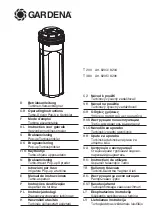
BEFORE YOU START BUILDING
Experience shows there are
four common mistakes
builders make.
Avoid these, and your kit will probably work on the first try! Here's what
they are:
1. Installing the Wrong Part:
It always pays to double-check each
step. A 1K and a 10K resistor may look
almost
the same, but they
may act very differently in an electronic circuit! Same for capacitors--a
device marked 102 (or .001 uF) may have very different operating
characteristics from one marked 103 (or .01uF).
2. Installing Parts Backwards:
Always check the polarity of electrolytic
capacitors to make sure the positive (+) lead goes in the (+) hole on
the circuit board. Transistors have a flat side or emitter tab to help
you identify the correct mounting position. ICs have a notch or dot at
one end indicating the correct direction of insertion. Diodes have a
banded end indicating correct polarity. Always double-check--
especially before applying power to the circuit!
3. Faulty Solder Connections:
Inspect for cold-solder joints and solder
bridges. Cold solder joints happen when you don't fully heat the
connection--or when metallic corrosion and oxide contaminate a
component lead or pad. Solder bridges form when a trail of excess
solder shorts pads or tracks together (see Soldering Tips below).
4. Omitting or Misreading a Part:
This is easier to do than you might
think! Always double-check to make sure you completed each step in
an assembly sequence.
Soldering Tips:
Cleanliness
and good
heat distribution
are the two secrets of professional
soldering. Before you install and solder each part, inspect leads or pins
for oxidation. If the metal surface is dull, sand with fine emery paper until
shiny. Also, clean the oxidation and excess solder from the soldering iron
tip to ensure maximum heat transfer. Allow the tip of your iron to contact
both the lead and pad for about one second (count "one-thousand-one")
before feeding solder to the connection. Surfaces must become hot
enough for solder to
flow smoothly
. Feed solder to the opposite
side of
the lead from your iron tip--solder will wick around the lead toward the tip,
wetting all exposed surfaces. Apply solder sparingly, and do not touch
solder directly to the hot iron tip to promote rapid melting. If you are using
Lead free solder it has a higher melting point than the older Tin-Lead
solder. Make sure you allow the lead and pad to get hot enough for the
solder to flow properly. DO NOT USE ACID CORE SOLDER.
When cutting and bending leads make sure they do not short between
adjacent pads on the board.






































